First sight: Lucid Air
The Lucid Air has stayed faithful to its concept and has a refreshing, light-touch approach to ‘luxury’
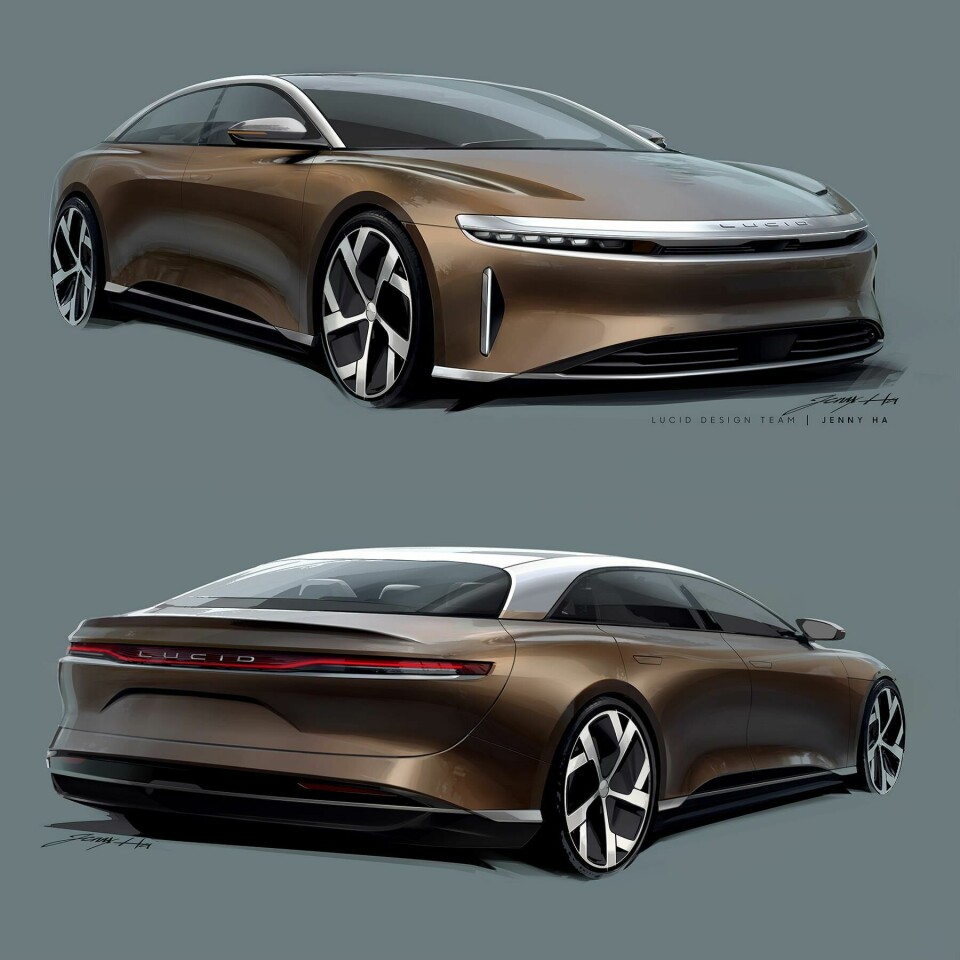
California-based Lucid Motors have finally revealed their first production model, the Air saloon that offers the space of a large luxury car in a reimagined, midsized package. Closely based on the concept car we saw in 2016, the Air is a departure from traditional luxury flagships with its cab forward-design and short nose, enabled by the Air’s compact, proprietary electric drivetrain. The Air is putting other carmakers on notice with a 518-mile range and a drag coefficient of only 0.21 Cd, the lowest of any production vehicle, usurping the Mercedes-Benz A-Class.
Lucid’s leadership team includes CEO and COO Peter Rawlinson, who served as chief engineer on the Tesla Model S programme and former head of advanced engineering at Lotus Cars. The design team is led by Derek Jenkins, who worked for Volkswagen Group for more than a decade, including stints at Audi’s Ingolstadt and California studios. Prior to joining Lucid, Jenkins was design director for Mazda in the US. Lucid’s head of interior design is Joann Jung, who worked at Ford for nearly 12 years before joining Jenkins in Silicon Valley. Both are graduates of ArtCenter College of Design in Pasadena, CA.
“We had a strong intent from day one to do two things,” Jenkins explains: “To establish ourselves as a luxury brand, and to do that we really wanted to launch with a sedan from an elegance standpoint. The other side of that was efficiency. And part of being efficient is weight and aerodynamics, so to really lead in efficiency from a format standpoint, a sedan makes a lot of sense.”
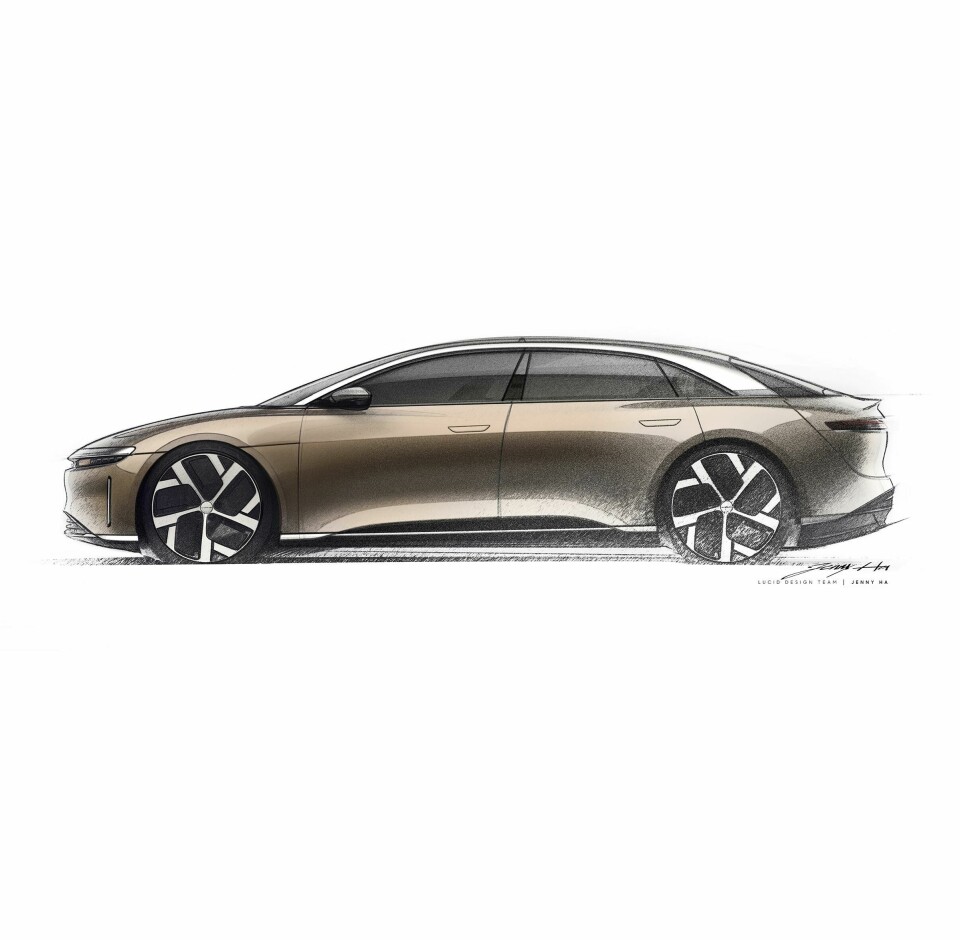
Last February, before the world went into lockdown, Rawlinson and Jenkins revealed the exterior of the production car to a crowded room of customers and a handful of journalists at the company’s headquarters in Newark, CA. Ahead of its official public debut this week (which was originally scheduled for April at the ill-fated New York International Auto Show), we got a private, socially distanced tour of the Air at Lucid’s posh new retail space in Beverly Hills.
“Peter had a pretty clear idea about how he wanted to rethink the packaging,” Jenkins tells us, “so we started with a general blueprint of what that might be and immediately we went into studies about how to make something special that was endearing and unique.” Jenkins and a team of five exterior designers studied three paths: something more traditional, something extreme and futuristic, and something in between. “We did the work mostly in digital and realized those in scale. But at that time. we didn’t know who we were yet, so it all evolved simultaneously,” Jenkins remembers. “That was the wonderful part but also the scary part. If you work at Audi, you know what an Audi is supposed to look like and you work within those parameters.”
Over a short period of time Jenkins and the team established Lucid’s brand values, which he describes as clean and future-facing. “We feel that luxury is shifting and for the most part progressive consumers don’t really care about legacy and tradition, they care about technology and experience and sustainability. We use the term ‘heart and mind’ a lot – something that is cutting-edge high tech but is still human, approachable, and warm. We’re not after blade runner, that’s not what we’re trying to do.”
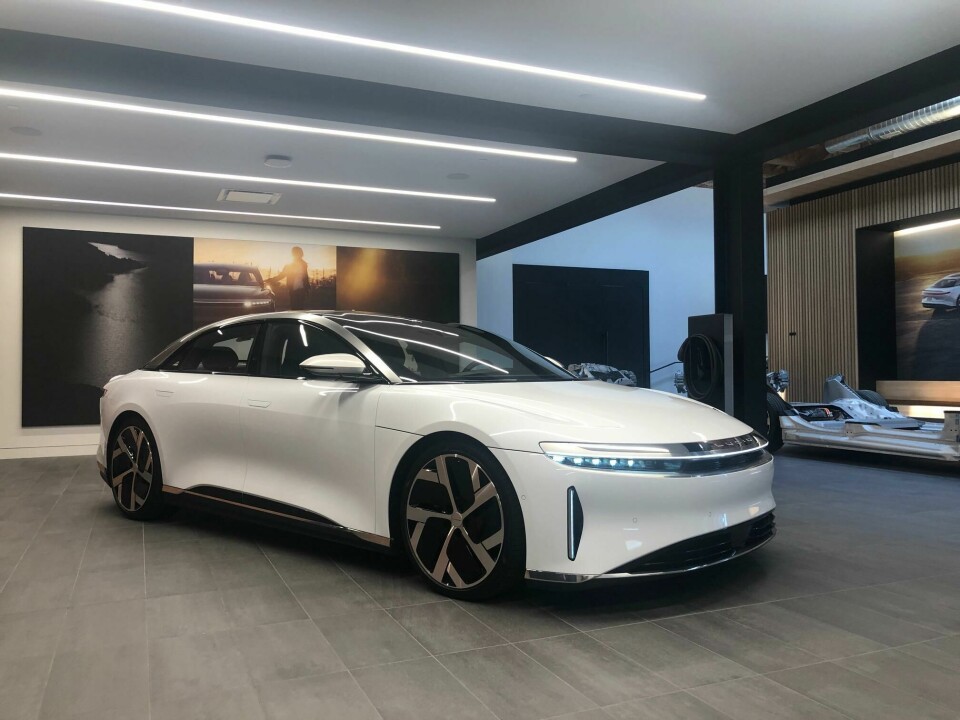
The end result was a luxurious saloon not far off from the prototype the team did in those early months. “The original show car in late ‘16 was pretty far along with feasibility development,” Jenkins says. “The exterior is virtually identical; we’ve had small changes to details within the headlight modules, door handles, mirrors, all the things that are heavily regulated like pedestrian impact and aero development, and we took that period to really refine the car in terms of surface development.”
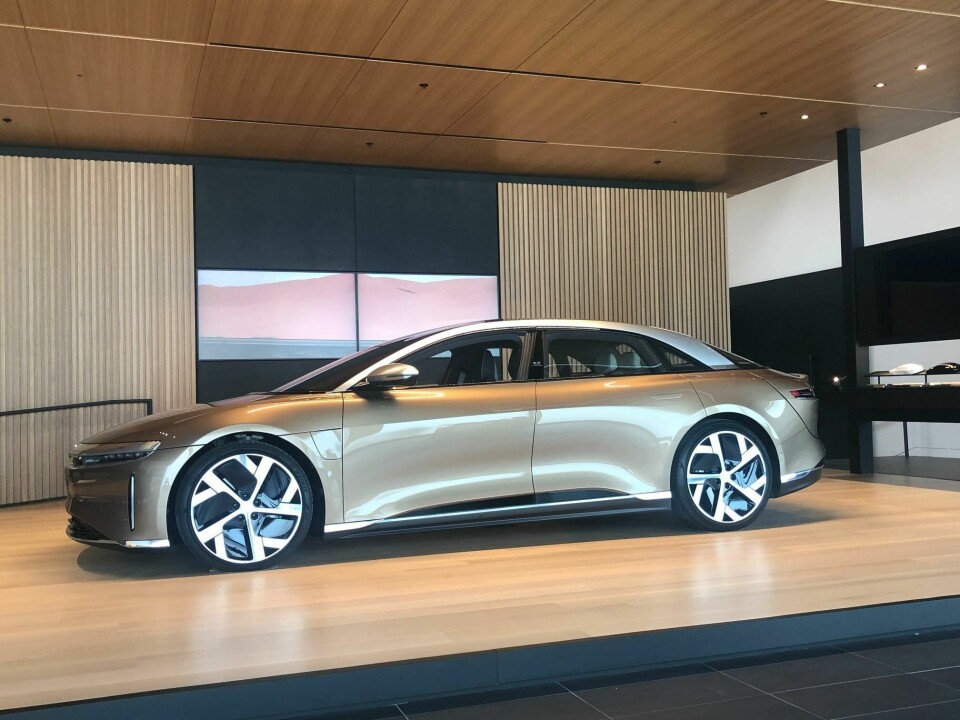
Jenkins says his excitement for the car begins with its basic architecture. “It’s low, it’s wide, it’s a reasonable length – so that makes it more than a sedan shape, it’s really kind of a coupé sedan, so I’m really proud that we’ve been able to achieve that something that’s very elegant, long and sleek, yet on the inside it’s incredibly spacious. We have long-wheelbase S-Class space out of an otherwise midsize car and I think that’s symbolic of what you can do with electrification.” Jenkins is particularly proud of being able to maintain the metallic “blades” on the front of the car, as well as the metal roof architecture that highlights the canopy glass roof.
The interior is light and airy, what Jenkins describes as “post-luxury.” One of the interior’s notable elements is the curved display, which is currently constructed in three pieces but will in later iterations be replaced with a single unit. “Our primary IP has evolved from the show car,” Jenkins says. “It’s a lot lighter, it’s got more curvature, and it’s much more of a floating element than it was in the show car. We’re super excited that we’ll be bringing this to market.” Later on, the Air will get an executive rear seat option, which will offer reclining functions and a central rear interface similar to that on the show car.
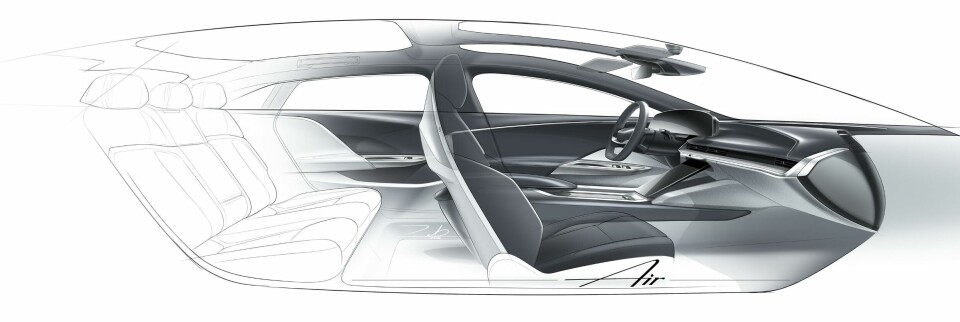
For her part, Jung says the floating elements are some of her favorite aspects of the interior design. “Our challenge was how to make the most openness in these 3D sculptural elements,” she explains. “I like to play with positive and negative, light and dark, because with a simple shape you can create so much drama.” Jung says the design team used a combination of new thinking and lessons learned from their previous work at OEs. “Just because we are new doesn’t mean we have to invent everything. It’s a rearrangement of what we are already used to, but reintroducing material into a new vehicle. We are using a lot of fabrics; we have leather in key areas, but the woven fabrics throughout are playing a much bigger role – as it would in a living room – and being applied in a way that’s light and fresh.” The interior also reflects the Air’s proud California heritage; all five interior theme choices are named after iconic California locales such as Santa Monica and Tahoe. And several small emblems of the California grizzly bear, whose likeness appears on the Golden State’s flag, can be found throughout the cabin.
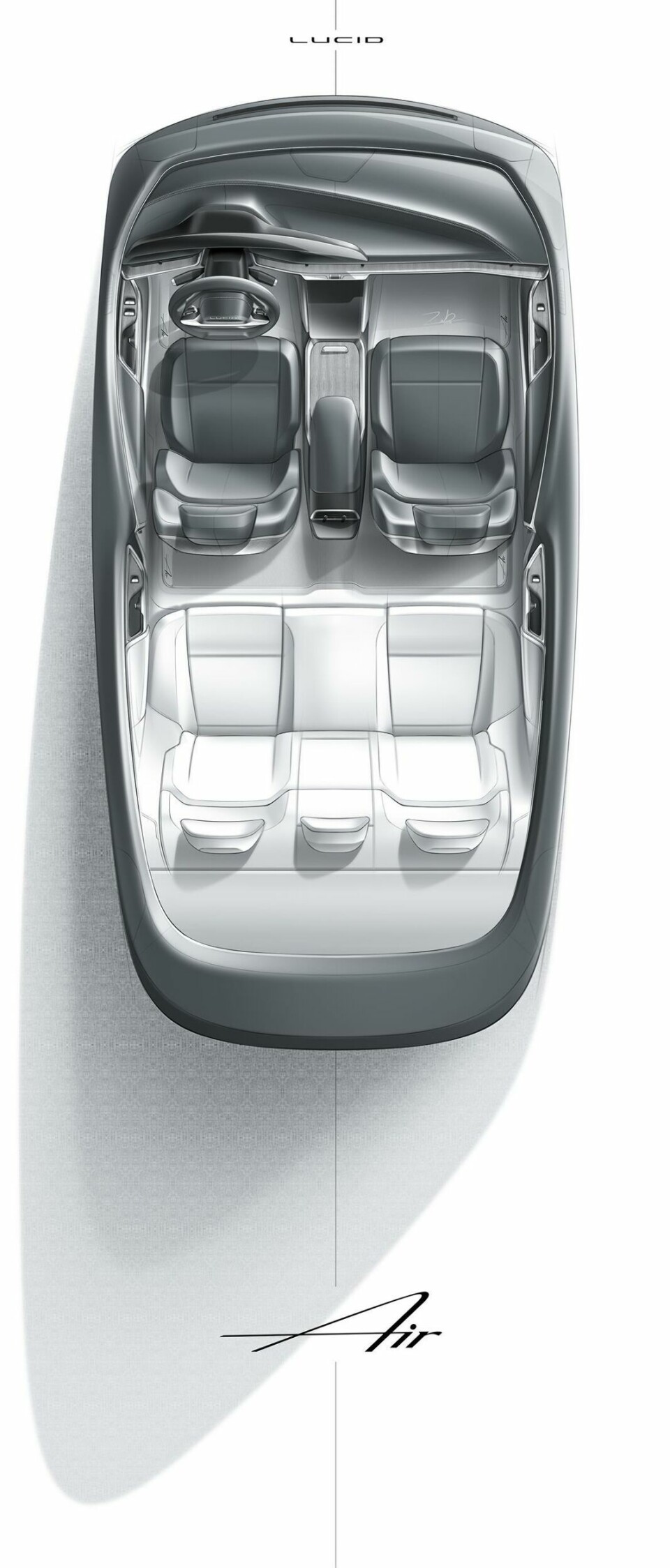
Sustainability is also a key value for Lucid. “The intention long-term is to be very transparent about who our partners are, where these materials come from. The design team gets involved with the supply chain from the beginning,” Jung says. For example, leather is supplied by Bridge of Weir, which uses a sustainable tanning process and claims to have the lowest carbon footprint of any leather supplier in the industry. “We’ve tried to go through and select materials very carefully as well as high content of recyclability in our fabric. It’s not just the material it’s the process. How much water, what happened to the waste, all those things are very critical to us,” Jung says.
When designing the car, Jenkins says the team followed some traditional aspects with a lot of sketching and conceptualisation up front, doing early digital development volumes, then going straight into scale and back to digital. Later, the team moved more toward VR. “It helped us a lot with feasibility because it brought the design team and engineering team closer together on critical decisions because we could iterate so quickly. So the VR became a huge tool and we’ve been pretty religious about it since – interior and exterior – I would say it played more of a role in the feasibility phase than in the creation phase [with the Air] but now that we’re on to another programme, it’s playing a much bigger role in the creation phase,” he explains. Clay models were done on-site at the company’s prior location, and that equipment has since been moved to the new HQ.
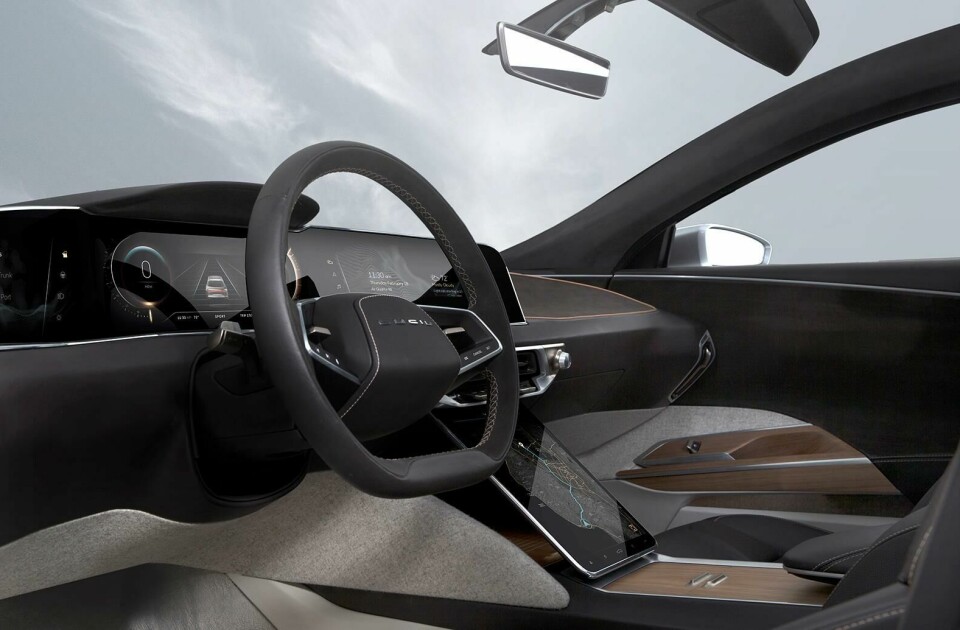
Jenkins and Jung both say the success of the Air was driven by close collaboration between the designers and engineers. “We operate with this idea that great engineering enables great design and vice versa,” Jenkins explains. “Peter seeks out engineers who understand and respect design, and conversely, we are looking for form-function solutions and at the end of the day this cohesive equation works.”
Full-scale production of the Lucid Air is slated to start at the end of this year at the company’s new factory in Casa Grande, Arizona. The Air will be first sold in the US., followed by select markets in Europe and the Middle East.
Beyond that? “We’ll obviously follow the Air with an SUV, there’s no question,” Jenkins reveals. “But it will be more of a true SUV and less of a crossover.” Jenkins will also be working on expanding the design studio and getting the entire team in the same room. But he also contends that he doesn’t need a grand facility to get the job done. “You don’t need a cathedral to design a great car,” he says. “All those palaces are meaningless. You can design the next greatest design in someone’s garage.”
























































